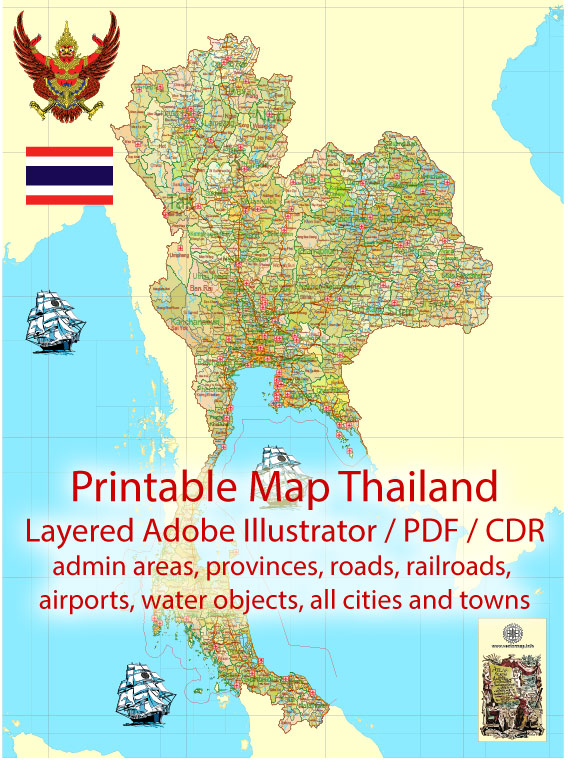Thailand’s history of urban development is a fascinating journey that reflects the country’s cultural, economic, and political evolution. The urbanization process in Thailand can be traced back over centuries, with significant developments occurring in different historical periods. Here’s an overview of Thailand’s urban development history:
- Ancient Kingdoms (pre-13th century):
- The early urban centers in the region were established by ancient civilizations such as the Dvaravati and Khmer. These early settlements were characterized by religious and trade activities.
- The Khmer Empire, which had a substantial influence on the region, left behind architectural marvels such as the Angkor Wat in present-day Cambodia.
- Sukhothai and Ayutthaya Kingdoms (13th-18th centuries):
- The Sukhothai Kingdom, founded in the 13th century, and later the Ayutthaya Kingdom, witnessed the establishment of administrative and trade centers.
- Ayutthaya, the capital of the Ayutthaya Kingdom, was a thriving urban center with a well-developed canal system and impressive temples.
- Thonburi and Rattanakosin Period (18th-20th centuries):
- The capital moved to Thonburi in the 18th century before King Rama I established Rattanakosin (modern-day Bangkok) as the new capital in 1782.
- Bangkok became a major center for trade and commerce, attracting diverse communities. The city expanded, and infrastructure development included the construction of roads, canals, and temples.
- Western influences during the 19th century, including the reigns of King Rama IV and Rama V, contributed to the modernization of Bangkok.
- Colonial Era and World War II (late 19th-20th centuries):
- Thailand managed to avoid colonization by European powers but faced diplomatic pressure during the colonial era.
- In the 20th century, urban development faced challenges during World War II and the Japanese occupation. After the war, Thailand experienced economic recovery and urban growth.
- Post-World War II and Economic Boom (mid-20th century):
- The latter half of the 20th century saw rapid industrialization and urbanization. Bangkok, in particular, transformed into a bustling metropolis.
- Infrastructure projects, including the development of highways and the Skytrain system, aimed to accommodate the growing population and improve connectivity.
- Late 20th Century to Present:
- Economic growth continued into the late 20th century, with Bangkok becoming a major financial and business hub.
- Urban challenges such as traffic congestion, pollution, and informal settlements emerged as the city continued to expand.
- Government initiatives focused on sustainable urban development, including public transportation projects and environmental conservation efforts.
- 21st Century:
- Bangkok has continued to evolve, embracing modern architecture, technology, and smart city initiatives.
- The government has undertaken projects to address urban challenges and promote sustainable development.
Throughout its history, Thailand’s urban development has been shaped by a combination of indigenous influences, cultural heritage, and global economic trends. The country’s urban centers continue to play a crucial role in its social, economic, and political landscape.


 Author: Kirill Shrayber, Ph.D.
Author: Kirill Shrayber, Ph.D.